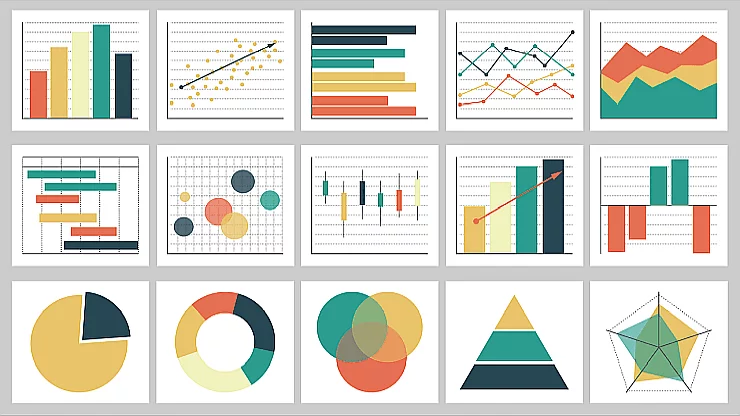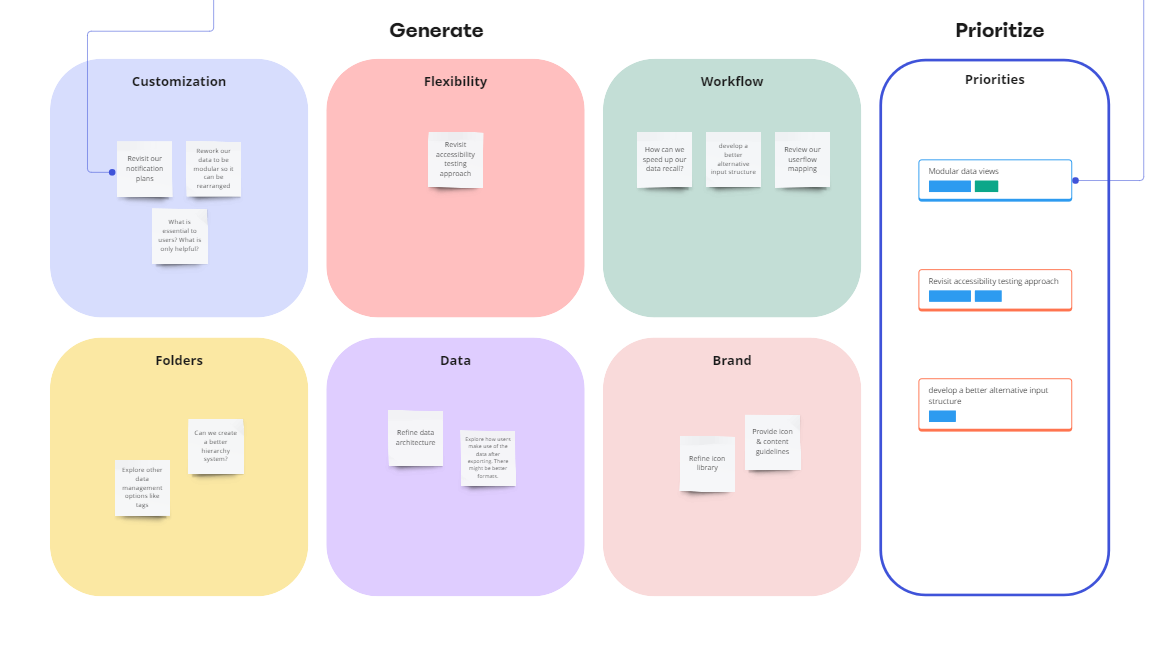Mastering Information Hierarchy: A Visual Guide to Intuitive User Navigation
Understanding the fundamental principles that create seamless user experiences
I've spent years studying how users interact with digital interfaces, and one thing has become abundantly clear: the way we structure information can make or break the user experience. In this comprehensive guide, I'll walk you through the art and science of creating effective information hierarchies that guide users naturally through your digital spaces.
Understanding Information Hierarchy Fundamentals
I've found that information hierarchy is much more than just arranging elements on a page. It's a strategic approach to organizing content that creates intuitive pathways for users to follow. When I design digital spaces, I think of information hierarchy as the invisible architecture that guides the user experience.

At its core, information hierarchy is about reducing content organization challenges and cognitive load. When users encounter well-structured information, they don't need to work to understand it—everything just makes sense. This natural flow dramatically improves user satisfaction and engagement.
The relationship between information architecture and user navigation patterns is symbiotic. The way we structure our content directly influences how users move through our digital spaces. By understanding this relationship, we can design more intuitive navigation systems.
Cognitive Load Reduction by Hierarchy Type
Different hierarchy approaches can significantly impact how much mental effort users need to navigate your content:
When I'm working on complex information structures, I often use PageOn.ai's AI Blocks to visualize different hierarchical approaches before implementation. This tool allows me to experiment with various structures and see how they might impact user navigation, helping me identify the most intuitive arrangement before committing to a specific design.
Core Elements of Strong Information Hierarchy
Visual Prioritization Techniques
I've learned that effective information hierarchy relies heavily on visual cues to establish importance. Size, color, contrast, and spacing are powerful tools for guiding user attention. By strategically applying these elements, I can create focal points that naturally draw the eye to the most important information first.
Visual Hierarchy Elements
The most effective visual cues for establishing hierarchy:
flowchart TD
A[Visual Hierarchy] --> B[Size]
A --> C[Color]
A --> D[Contrast]
A --> E[Spacing]
A --> F[Typography]
B --> B1[Larger elements draw attention first]
C --> C1[Vibrant colors stand out]
D --> D1[High contrast increases visibility]
E --> E1[Strategic whitespace creates focus]
F --> F1[Font weight signals importance]
style A fill:#FF8000,stroke:#333,stroke-width:2px,color:white
style B fill:#FF9933,stroke:#333,stroke-width:1px
style C fill:#FF9933,stroke:#333,stroke-width:1px
style D fill:#FF9933,stroke:#333,stroke-width:1px
style E fill:#FF9933,stroke:#333,stroke-width:1px
style F fill:#FF9933,stroke:#333,stroke-width:1px
Logical Content Grouping
Effective categorization is essential for helping users find related information quickly. When I organize content, I carefully consider both the depth and breadth of navigation structures. Too shallow, and users must wade through too many options at once; too deep, and they might get lost in nested menus.

I typically aim for what I call the "goldilocks zone" of information architecture—just the right balance of breadth and depth. For most websites, this means limiting primary navigation to 5-7 main categories (following our cognitive processing limits) and then creating logical subcategories that group related items together.
Clear Pathways and Wayfinding
Users need to know where they are, where they've been, and where they can go next. I implement breadcrumb navigation and persistent navigation elements to provide these essential wayfinding cues. These elements create a sense of location within the larger information space.
I design for both linear and non-linear exploration, recognizing that different users have different navigation preferences. Some prefer to follow a prescribed path through content, while others jump between sections based on interest. A well-designed information hierarchy accommodates both approaches.
To integrate relevant examples and best practices, I use PageOn.ai's Deep Search capabilities. This helps me discover and visualize effective hierarchy patterns that have been proven successful in similar contexts, saving me from reinventing the wheel while ensuring I'm implementing current best practices.
Wayfinding Elements Effectiveness
How different navigation aids help users understand their location:
Information Hierarchy Across Different Interfaces
Website Navigation Structures
I approach website navigation as a multi-layered system. Primary navigation handles the main sections, secondary navigation manages subsections, and tertiary navigation addresses detailed categories. Each layer must be visually distinct yet connected to create a cohesive system.
Website Navigation Hierarchy
flowchart TD
Home[Homepage] --> Primary1[Products]
Home --> Primary2[Services]
Home --> Primary3[Resources]
Home --> Primary4[About Us]
Home --> Primary5[Contact]
Primary1 --> Secondary1[Category A]
Primary1 --> Secondary2[Category B]
Primary1 --> Secondary3[Category C]
Secondary1 --> Tertiary1[Product 1]
Secondary1 --> Tertiary2[Product 2]
Secondary1 --> Tertiary3[Product 3]
classDef home fill:#FF8000,stroke:#333,stroke-width:2px,color:white
classDef primary fill:#FF9933,stroke:#333,stroke-width:1px,color:white
classDef secondary fill:#FFCC99,stroke:#333,stroke-width:1px
classDef tertiary fill:#FFE6CC,stroke:#333,stroke-width:1px
class Home home
class Primary1,Primary2,Primary3,Primary4,Primary5 primary
class Secondary1,Secondary2,Secondary3 secondary
class Tertiary1,Tertiary2,Tertiary3 tertiary
One of the biggest challenges I face is adapting hierarchy for responsive designs. Information that works well in a desktop layout may need significant restructuring for mobile. I prioritize the most essential navigation paths on smaller screens, using techniques like collapsible menus and priority-based content stacking.
Mobile App Information Architecture
Mobile interfaces present unique challenges for information hierarchy. With limited screen space, I focus on touch-oriented design principles that accommodate natural thumb movement patterns and ensure tap targets are appropriately sized and spaced.

Progressive disclosure becomes especially important in mobile contexts. Rather than overwhelming users with all options at once, I reveal information gradually as users need it. This might involve expandable sections, swipe gestures to reveal additional options, or multi-step processes that break complex tasks into manageable chunks.
Dashboard and Complex System Organization
Information-dense interfaces like dashboards require particularly thoughtful hierarchy. I use ai-powered organizational chart techniques to establish clear data visualization hierarchies, ensuring the most important metrics receive visual prominence while supporting details remain accessible but less visually dominant.
Dashboard Organization Approaches
Comparing task-based vs. data-based organization effectiveness:
I've found that the choice between task-based and data-based organizational approaches depends largely on the users' primary goals. Task-based organization works well when users come to the system with specific actions in mind, while data-based organization is better suited for exploratory analysis and monitoring.
PageOn.ai has been invaluable for rapidly prototyping and visualizing hierarchy models across these different platforms. Its visualization tools help me test various approaches before committing to a specific implementation, saving considerable development time and reducing the risk of creating ineffective navigation structures.
Practical Implementation Strategies
Sitemap Development Process
When I develop sitemaps, I start by creating logical content taxonomies that reflect users' mental models. This involves extensive research to understand how users naturally categorize and relate the information in your domain. Card sorting exercises can be particularly revealing, showing how users intuitively group your content.

Validating hierarchy through user testing is essential before finalizing any information architecture. I use techniques like tree testing (reverse card sorting) to verify that users can successfully find information within the proposed structure. This helps identify and address potential navigation issues before they become costly problems.
Navigation Menu Design Best Practices
Strategic labeling is critical for intuitive discovery. I use clear, descriptive labels that immediately communicate what users will find, avoiding clever but ambiguous terminology. Consistency in labeling across the site helps users build accurate mental models of your information space.
As UX research consistently recommends, I limit primary navigation to 5-7 main categories. This constraint forces strategic thinking about what truly deserves prominence in your information architecture. For complex sites, this means creating thoughtful hierarchies rather than flattening everything into a single overwhelming menu.
Navigation Menu Effectiveness
Impact of different menu structures on user task completion:
Search Integration
Even the most carefully designed navigation hierarchy can't anticipate every user's specific needs. That's why I always complement hierarchical navigation with robust search functionality, especially for content-rich websites. Search provides an essential alternative pathway for goal-oriented users seeking specific information.
Research indicates that 43% of website visitors immediately gravitate to search functions within the first 30 seconds of arrival. This highlights search as a primary rather than secondary navigation method for many users. I ensure search is prominently positioned (typically upper right) and designed to handle natural language queries effectively.
PageOn.ai's Vibe Creation feature has been particularly useful for transforming complex sitemap structures into clear visual representations. This helps stakeholders understand and provide feedback on proposed information architectures before development begins, ensuring alignment and reducing costly revisions later.
Measuring Hierarchy Effectiveness
I believe that what gets measured gets improved. When evaluating information hierarchy performance, I focus on several key metrics: task success rate, time on task, navigation path efficiency, search usage patterns, and user satisfaction scores.
Key Metrics for Evaluating Information Hierarchy
flowchart TD
A[Hierarchy Evaluation] --> B[Task Success Rate]
A --> C[Time on Task]
A --> D[Navigation Path Analysis]
A --> E[Search Usage Patterns]
A --> F[User Satisfaction]
B --> B1[% of users completing tasks successfully]
C --> C1[Average time to complete key tasks]
D --> D1[Steps taken vs. optimal path]
E --> E1[Search frequency and refinement needs]
F --> F1[Satisfaction surveys and feedback]
style A fill:#FF8000,stroke:#333,stroke-width:2px,color:white
style B,C,D,E,F fill:#FF9933,stroke:#333,stroke-width:1px,color:white
Setting up analytics to track navigation patterns is essential. I configure event tracking for navigation interactions, establish conversion funnels to monitor user flows, and use heatmaps to visualize where users click and how far they scroll. This data helps identify friction points where users struggle to find information or complete tasks.
A/B testing is my go-to methodology for optimizing hierarchical structures. By testing variations of navigation systems with real users, I can make data-driven decisions about which approaches work best. I typically test one element at a time—menu structure, labeling, grouping—to clearly identify which changes drive improvements.

PageOn.ai has transformed how I work with complex user behavior data. Its visualization capabilities help me turn raw analytics into actionable visual insights that clearly communicate issues and opportunities to stakeholders. This visual approach makes it much easier to build consensus around needed improvements.
Case Studies: Information Hierarchy Success Stories
E-commerce Example: Airbnb's Visual Hierarchy Mastery
Airbnb provides an excellent case study in visual hierarchy principles. Their interface masterfully uses size, color, and spacing to guide users through the booking process. Large, high-quality property images immediately capture attention, while supporting information is presented in a clear hierarchical structure below.

What makes Airbnb's approach particularly effective is how they use visual hierarchy to support the user's decision-making process. Primary decision factors (location, price, availability) receive visual prominence, while secondary information (host details, amenities, policies) remains accessible but less visually dominant. This creates a natural flow that aligns with how users evaluate accommodation options.
Content-Rich Site Example: Information Architecture Solutions
Content-rich publishing platforms face unique information architecture challenges. The New York Times digital platform exemplifies effective solutions, using a combination of hierarchical categorization and personalized recommendations to help users navigate their vast content library.
Their approach combines traditional section-based navigation (News, Opinion, Arts, etc.) with dynamic content modules that highlight trending stories and personalized recommendations. This dual approach accommodates both users who navigate by familiar categories and those who prefer discovery-based exploration.
Content Discovery Methods Effectiveness
How users find content on large publishing platforms:
Enterprise Portal Example: Structuring SharePoint Navigation
Enterprise portals like SharePoint present special challenges for information hierarchy due to their complex functionality and diverse user needs. Successful SharePoint navigation design requires balancing organizational structure with task-oriented access patterns.
Effective SharePoint implementations typically use a combination of global navigation (for organization-wide resources), local navigation (for department or team-specific content), and personalized quick links (for individual productivity). This multi-layered approach accommodates different user contexts while maintaining overall coherence.
Using PageOn.ai's AI Blocks, I've been able to visualize these case studies to extract transferable principles that can be applied to other contexts. This helps me identify patterns that work across different industries and application types, building a repertoire of effective information hierarchy approaches.
Future-Proofing Your Information Hierarchy
The most sustainable information hierarchies are those designed with flexibility in mind. I approach this by creating systems that can accommodate content growth without requiring complete restructuring. This means establishing clear patterns for where new content should be placed and how the navigation system can expand without becoming unwieldy.

AI-assisted navigation represents an exciting frontier in information hierarchy. By incorporating knowledge graph RAG systems, we can create navigation experiences that adapt to individual user behavior patterns and preferences while maintaining the benefits of traditional hierarchical structures.
The challenge lies in balancing innovation with established mental models. Users bring expectations based on their previous experiences, so radical departures from familiar patterns can create friction. I find the most successful approach is to innovate within recognizable frameworks, gradually introducing new patterns alongside familiar ones.
Emerging Navigation Patterns
Adoption rates of newer navigation approaches:
PageOn.ai's Agentic capabilities have been invaluable for modeling future navigation scenarios. By simulating how different user types might interact with proposed navigation systems under various conditions, I can identify potential issues and opportunities before they arise in real-world use.
As we move toward more dynamic knowledge base management systems, information hierarchy will need to become more adaptive and personalized while maintaining the clarity and predictability that users need for efficient navigation. Finding this balance will be the key challenge for information architects in the coming years.
Transform Your Information Architecture with PageOn.ai
Turn complex hierarchies into clear, intuitive visual expressions that guide your users effortlessly through your content.
Start Creating Visual Hierarchies TodayBringing It All Together
Throughout this guide, I've shared my approach to creating effective information hierarchies that guide users intuitively through digital spaces. From understanding the psychological foundations to implementing practical strategies across different interfaces, the goal remains consistent: reduce cognitive load and create clear pathways to information.
As digital experiences continue to evolve, the principles of good information hierarchy remain remarkably constant. Users need clear structure, logical organization, and intuitive pathways regardless of the specific technology or platform. By focusing on these fundamentals while embracing new tools and techniques, we can create navigation systems that feel both familiar and fresh.
I've found that visualization tools like PageOn.ai have transformed how I approach information hierarchy design. By making abstract structures visible and testable, these tools help bridge the gap between concept and implementation, ensuring that the final result truly serves user needs while advancing business goals.
Whether you're designing a simple website, a complex enterprise portal, or something in between, I hope these principles and strategies help you create information hierarchies that guide users effortlessly to the information they need. After all, the best navigation is the kind users barely notice—because it just works.
You Might Also Like
Revolutionizing Slides: The Power of AI Presentation Tools | PageOn.ai
Discover how AI presentation tools are transforming slide creation, saving hours of work while enhancing design quality. Learn how PageOn.ai can help visualize your ideas instantly.
Transform Your Google Slides: Advanced Techniques for Polished Presentations
Master advanced Google Slides techniques for professional presentations. Learn design fundamentals, visual enhancements, Slide Master, and interactive elements to create stunning slides.
Transform Your Presentations: Mastering Slide Enhancements for Maximum Impact
Learn how to elevate your presentations with effective slide enhancements, formatting techniques, and visual communication strategies that captivate audiences and deliver powerful messages.
Mastering Content Rewriting: How Gemini's Smart Editing Transforms Your Workflow
Discover how to streamline content rewriting with Gemini's smart editing capabilities. Learn effective prompts, advanced techniques, and workflow optimization for maximum impact.

